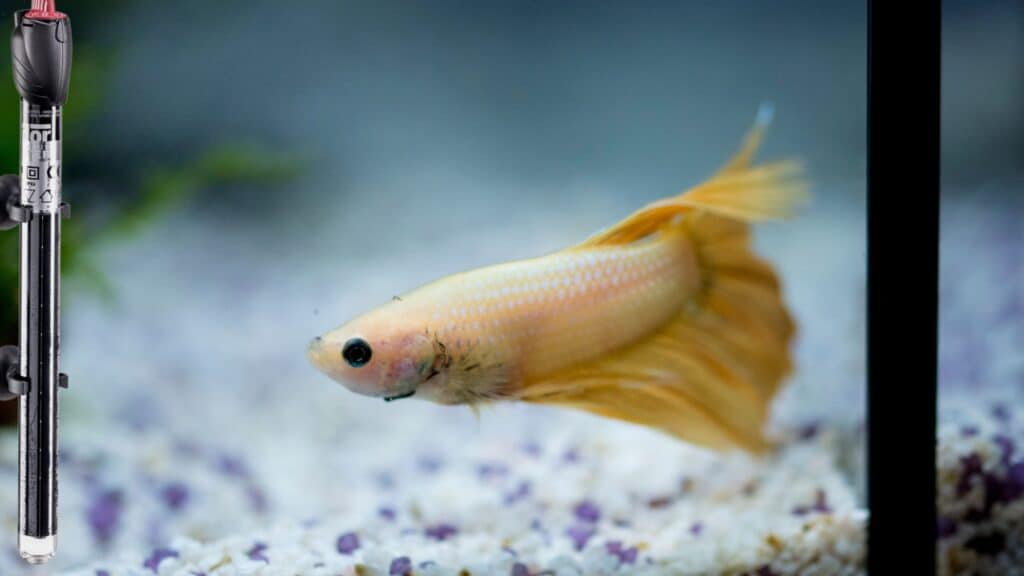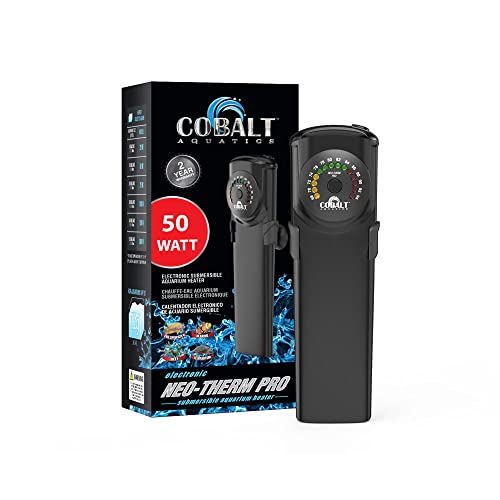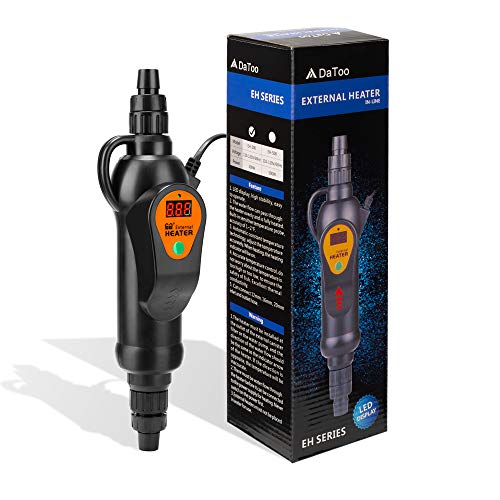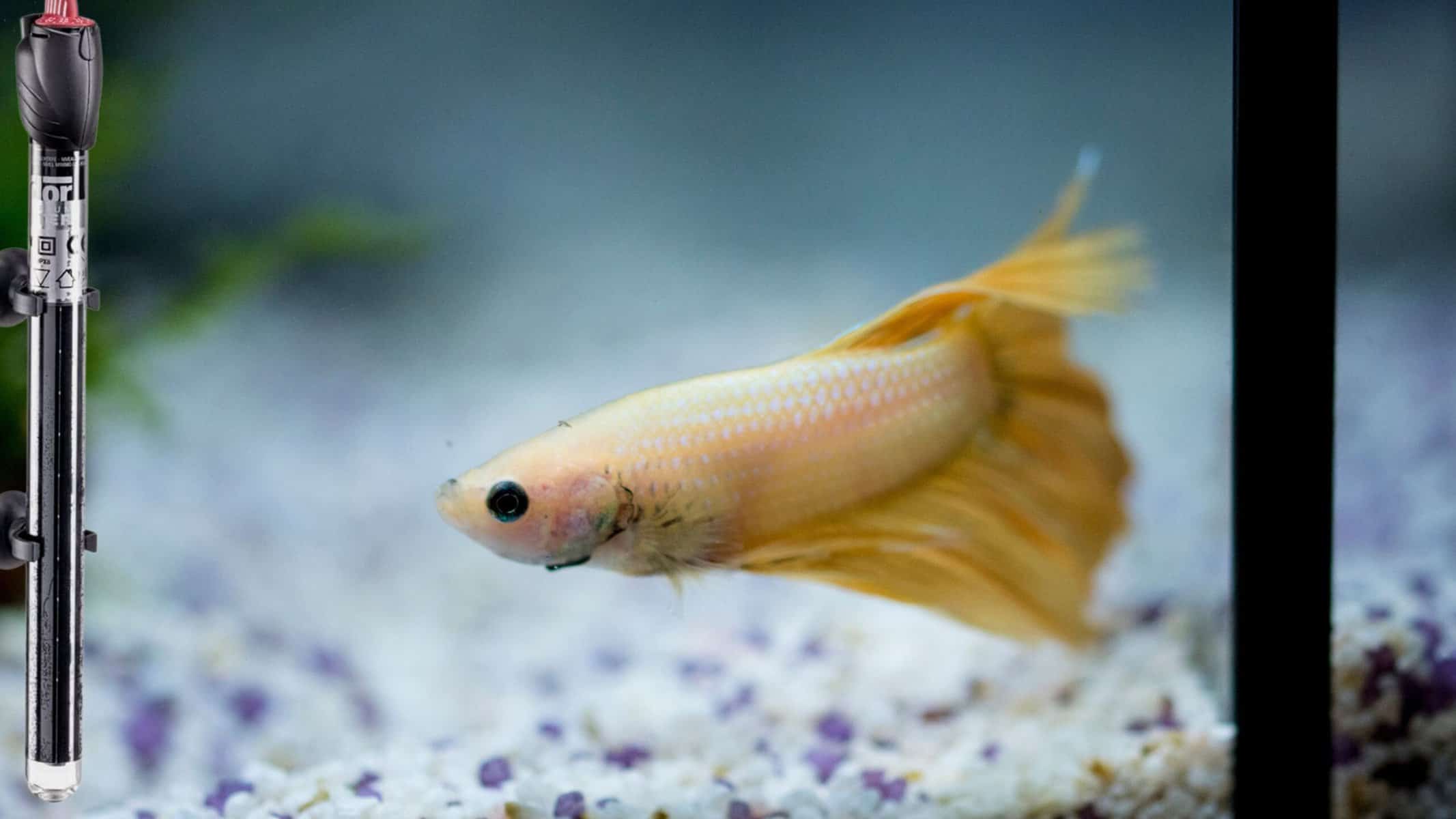Did you just finish setting up your brand new betta fish tank and are now wondering if you need to get a heater for your little guy? Well, you’re not alone. Many new betta fish owners are unsure of whether or not they need to get a heater for their tank.
The simple answer is yes, betta fish need a heater. While betta fish are tropical fish, they come from warm waters and cannot tolerate cold temperatures. A slight deviation from the ideal range can cause your betta fish to become sick or even die.
In this article, I’ll go over everything you need to know about betta fish and tank heaters, including the benefits of using a heater, the ideal water temperature for betta fish, and which type of heater is best for your betta fish tank.
Do Betta Fish Need a Heater to Survive?
Betta fish need a heater to survive because they come from southeast Asia where the water temperature is warm all year long. In their tropical environment, they live in a temperature range of 76-82 degrees Fahrenheit. That’s pretty warm!
Contrary to popular belief, lower temperatures don’t have a directly fatal effect on bettas. However, they make the fish more susceptible to diseases.
For example, when the temperature drops off, their metabolism slows down. So, they might not eat as much which can lead to malnutrition.
What Are the Risks of My Betta Fish Getting too Cold?
In cold water that is below 74°F, your aquarium fish will start to experience stress. The initial signs of this change in temperature are a lazier betta as it tries to burn less energy.
Once your betta fish is experiencing high levels of stress, it will stop eating. Its immune system weakens as its body becomes overwhelmed. Also, you might notice that his skin and scales start to become lighter in color.
When a fish’s immune system is low, they often seek warm temperatures. However, this won’t help and may make them more susceptible to contracting a bacterial or fungal infection.
What Are the Risks of My Betta Fish Getting too Hot?
When warm water temperatures exceed 85°F, bettas will start to overhead. This is because they are cold-blooded animals that can’t regulate their body temperature.
The first symptom you’ll notice is that your betta fish starts swimming erratically. Although you may think that heating up your fish’s tank will provide them with more energy, it stresses the fish which then weakens their immune system.
If your fish tank is getting too hot, one solution is to place a fan so it blows over the top of the water. This will make evaporation happen faster and keep your tank cooler.
How Does the Tank Size Affect Water Tank Temperature?
Do you remember in fourth-grade science class when you learned about the water cycle? Well, that same concept applies here. The more surface area your tank has (i.e., the larger it is), the more heat it will retain.
So, a small tank is going to lose heat faster than a big tank. If you have a small tank, you might want to consider getting a heater because the temperature can drop quickly.
For example, if you acquire tanks that are 5 gallons or larger, it becomes much simpler for the water inside the tank to maintain a constant temperature. Even if you have a heater in a 2.5-gallon tank, plummeting temperatures outside will still take their toll inside the fishbowl.
Typically, unheated water alters to match the temperature of its surroundings, though it will fluctuate a few degrees based on how much water is present.
For example, if the room’s temperature unexpectedly drops from 75 degrees to 70, the water in your aquarium won’t fall as rapidly. In fact, it could take several hours.
Although you and your betta might not mind a slight change in temperature, they will be very bothered by continual changes of +/- 5 degrees
If you have a one-gallon bowl, the water will take around 15 minutes to adjust to room temperature. However, if you have a 5-gallon aquarium, the water will only take an hour or two to adjust.
How Much Time Can a Betta Fish Go Without a Heater?
Several different elements determine whether a betta can live without a heater. For one, if the temperature in your room is typically above 78°F, then chances are your fish will survive for an extended period.
However, if the temperature is too cold or your betta fish is already sick, then it may only be a matter of days before they die.
What Are the Various Types of Heaters?
Hanging/Immersive Heater
This heater isn’t particularly effective because it only provides basics. It’s submerged in the tank and puts heat into the tank through a glass tube.
The only part of this heater that is submerged in water is the lower portion [which is entirely coated with glass], while the upper half sticks out.
Usually, you need to make a hole on top of the aquarium specifically for this type of heater. While they excel in freshwater tanks, they don’t do as well in standard saltwater fish tanks.
Submersible Heater
As its name implies, this type of heater is completely submerged in water. It’s a rectangular device that you can stick to the side of your fish tank using suction cups. Usually, you can set up this heater next to the filter so the water can flow through it and get heated.
Like hanging heaters, these have a glass-covered heating component. They can boil really hot and the glass has been known to crack when they overheat. However, this is not always the case. A lot of submersible heaters have a hardened plastic exterior rather than glass.
Also, the heater comes with an excellent signaling system that uses an LED light to show the heater’s status and temperature. The LED light is on when the Heater is running and it goes off when it’s inactive or turned off.
Because this heater is fully submerged, it provides a more stable heat source. Additionally, it performs better because it is anchored to the bottom of the tank next to the filter.
Substrate Heater Design
This heater design is more outdated and was popular in the nineties. They were meant to be used as supplementary heaters for plants, often taking on a thin, wire-like form.
Even though they may seem inadequate, they provide enough heat. Like many things from the nineties, these are rare and can come at a high cost if you do manage to find one.
In-Line Heaters Design
This type of heater is a submersible filter that has been attached to an entirely new heating system. This kind of heater is usually found inside the filter.
Unlike other heaters, this one heats up the water as it returns to the tank. It was designed for aquariums with curious or mildly aggressive fish, so it’s more expensive than a regular heater. Because it’s installed on the outside of the tank, there is always a risk that it might leak.
What Are the Best Heaters for Betta Fish?
After doing some research, I’ve compiled a list of the best heaters for betta fish. These heaters have been chosen based on their quality, features, and customer reviews.
Hygger Submersible Aquarium Heater
This submersible heater from Hygger has everything you need in one package. It includes a ready-made thermometer so that you can easily and accurately monitor the temperature of your tank.
In addition, this heater comes with a milky quartz body, making it difficult for fish to detect. Plus, it is highly effective, and able to heat a tank containing 50 gallons or more with ease. Further, there is an external dial that allows you complete control over the temperature at all times.
I appreciate that this model has a feature that automatically disables all functions as soon as it develops a problem. Additionally, it is waterproof and small enough to sit next to a filter without being obtrusive. Although it’s inexpensive, its quality surpasses other models in the same price range.
Cobalt Aquatics 31000 Neo-Therm Heater
This amazing heater from Aquatics is the latest in tank aquarium technology. It comes with a single-button setup system and is completely electronic.
Plus, it features a thermostat and can achieve heating temperatures anywhere from 66°F to 96°F. Not only does it heat quickly, but it also has an LED system that changes color to indicate when the desired temperature has been reached.
Also, the device is shatterproof and has a built-in temperature regulator to prevent overheating. In addition, it can be used in various watery environments and is only 1/3 of an inch thick, making it very compact.
Finnex Digital Touch
This submersible heater differs from the flock because it has a unique feature that sets it apart. It comes equipped with what is called the last memory function.
With this product, you don’t have to worry about your settings being lost in the event of a power outage. Additionally, it comes with a titanium heating tube that ramp up temperature much quicker than other glass or plastic tubes – making this one of the best on the market.
Also, this product comes with a guard system that encases it completely and prevents fish from being harmed. In addition, it has an LED display that shows the current temperature in a sleek and stylish manner.
Plus, this product provides a quick and easy way to make adjustments with its immersive control system. With different wattage options available, it is also more accurate than most other heating systems on the market.
In-Line External Heater Aquarium Heater
This in-line heater operates as a pump. By cutting away tubing and installing it in between, the device connects to an external water source so that incoming water is warmed before entering the tank.
Depending on your tank’s requirements, this heater comes in varying wattages. Also, it is suitable for both freshwater and saltwater aquariums, has a low risk of damage when running dry, heats up and cools down quickly, and comes with quality insurance.
How to Keep Your Betta Fish Tank Warm in an Emergency?
Like they always say, it’s better to be safe than sorry. So, if you’re ever in a situation where your heater breaks and you can’t get a replacement right away, here are some tips for keeping your tank warm until you can get a new one:
- If you have a large tank or it will be some time before you can heat the water again, turning up the heating in your house can be an effective way. By warming the room, you prevent drafts from lowering the water temperature in your fish tank
- Moving your tank closer to the center of your home, away from windows will prevent heat loss. Windows are often a source of drafts and can make areas near them cooler
- If it’s sunny and warm in the external environment, you can also set your tank near a window where it will receive direct sunlight. Just be sure to monitor the water temperature carefully so it doesn’t get too hot
- Fill a bag with hot water (10% of the size of your tank) and place it in the aquarium. Remove 10% of the original water from the tank before adding the hot water-filled bag, then let it float on top
- If your tank is open-topped, you can place a towel over the top to help keep the heat in. Also, this can work if you have a lid as heat rises, putting a towel over your tank will trap the warmth inside
- You can use towels to insulate your tank and retain heat
- Although not a long-term solution, you could try using other household items that create heat in order to increase the temperature of your tank. For example, placing a lamp near your tank or aiming a hairdryer at it would work
- If your heater is not working, try wrapping your tank in an electric blanket. Just be sure to monitor the temperature of your tank carefully
- If you have enough candles, the heat from their flames will warm up the water in your tank. Tea lights work best for this purpose
How to Keep My Betta Tank Warm Without a Heater?
There are a few ways to keep your betta fish warm without buying a heater. Some of these methods are more common sense than anything else, but when you use a couple of them together, they can be very effective. Here are some basic tips for keeping your betta fish warm:
Keep the Tank Covered
This logic is pretty much common sense – if you want to keep something hot, don’t allow the heat to escape! A simple way to do this black lid or tank cover because they absorb and radiate heat well.
I know firsthand the consequences of inadequate oxygenation in an aquarium – it can be disastrous. The lid trapping air inside is often the problem, but it’s a quick fix. All you need is an air stone to increase airflow and maintain proper temperature simultaneously.
Exploit Your Aquarium Lights
Most aquariums have bright lights not only for the fish but also for the plants that live there. These lights give off heat, so if you have them on for 8-10 hours a day, they can help to increase the water temperature in your tank.
You might be thinking that this will make your electric bill go up, but it’s not as much as you think. In fact, aquarium lights use less energy than many other household appliances.
However, the only issue with this approach is that there’s a high chance of the fish tank overheating. So, it’s essential to check the temperature regularly and turn the lights off if the water starts to get too hot.
A Little Sunshine
The sun is the most natural source of heat, so if you can place your aquarium in a sunny spot, that would be ideal.
Just be careful not to put it in direct sunlight because that could cause the water to overheat quickly. If the water starts to get too warm, you can always move the aquarium to a shadier spot.
However, if you don’t want algae to grow in your tank, this method might not be the best option.
Use an Inefficient Filter
This method is a bit controversial, but some pet owners believe that using an inefficient filter can help to increase the water temperature.
The logic behind this is that the motor in the filter creates heat, so if it’s not working as efficiently, it will generate more heat.
Of course, you don’t want your filter to be so inefficient that it doesn’t do its job, so this method is best used in combination with other methods of heating the water.
FAQs
At What Point Does Water Temperature Become too Cold for My Betta Fish?
This is a difficult question to answer definitively. People have come up with numerous theories and assumptions about how much cold will be deadly to your betta fish species.
However, after conducting extensive research, I have discovered that 54°F has proven lethal to bettas after a few days.
How to Make Heating Alternatives Just As Effective As Heaters?
There are a few things you can do to make sure your heating alternatives are just as effective as heaters.
First, make sure you’re using more than one method of heating. This will ensure that the water temperature is more stable and less likely to fluctuate.
Second, check the temperature of the water regularly and adjust the heat accordingly.
Finally, be sure to provide your betta with plenty of hiding places. This will help them stay warm and comfortable even if the water temperature dips a bit.
How Long Does It Take for My Betta to Die in Heat/Cold?
Though I can’t give you an exact number of hours or days, I’ll give you a general idea. It usually takes around one to three days. In this time frame, your betta will become increasingly lethargic, stop eating, and eventually die.
Will My Fish Be Shocked If I Put It in a New Bowl?
If the water in your new bowl is the same temperature as the water in your old bowl, then your fish will be just fine.
However, if the water in the new bowl is significantly warmer or colder than the old one, your fish could go into shock. This can kill them, so it’s important to be careful.
How to Change My Betta’s Water Safely?
When changing your betta’s water, it’s important to do it slowly and carefully. I recommend using a siphon to remove the old water.
Then, add the new water a little at a time until the tank is full. You can then add a de-chlorinator to make sure the water is safe for your fish.
Last Words
Now that you know all about heating your betta fish tank, you can keep your fish healthy and happy. Just remember to be careful when using heaters and other proper heating methods.
Also, don’t forget to check the water temperature regularly and adjust the heat accordingly. Lastly, provide your betta with plenty of hiding places to stay warm.
If you have any other questions about heating your betta fish tank, feel free to leave a comment below. I’ll be happy to help you out!





